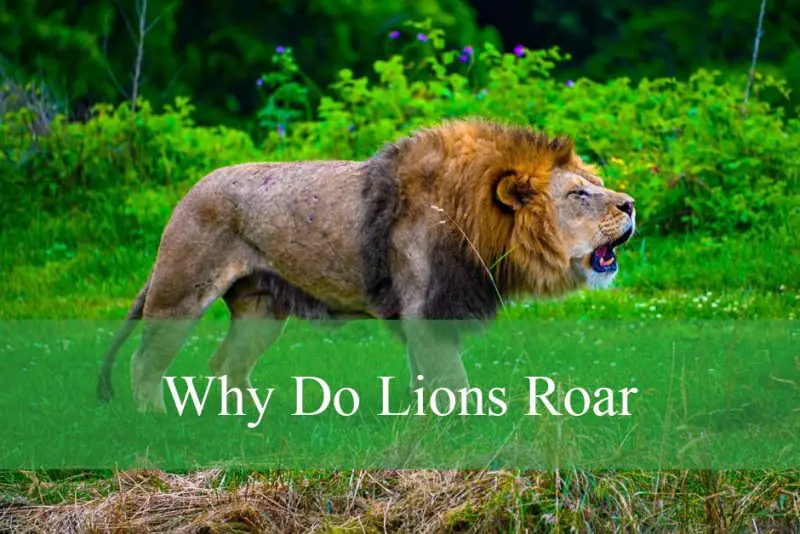The roar of a lion is one of the most powerful and iconic sounds in the animal kingdom. Revered as the “King of Beasts,” lions use their deep, thunderous roars not just to display strength but as a crucial form of communication. A lion’s roar can travel miles across the savanna, conveying important information to other lions and animals within its territory. But why do lions roar, and what do these roars mean? Understanding this unique vocalization reveals fascinating insights into lion behavior, social interaction, and survival in the wild.
In this detailed guide, we explore the science, purpose, and social importance of lion roars. From defending territory to strengthening family bonds, every roar has a story behind it. Let’s dive into the remarkable world of lion communication.
The Biology Behind the Lion’s Roar

The roar of a lion is possible due to its specialized vocal anatomy. Lions possess a unique larynx and vocal folds that allow them to produce exceptionally loud, low-frequency sounds. Their vocal folds are not typical triangular structures like in most animals but are square-shaped, which enables them to vibrate more efficiently with less lung pressure. This adaptation is essential for generating powerful roars without exhausting the lion’s energy.
On average, a lion’s roar can reach up to 114 decibels and travel as far as five miles, depending on wind and terrain. This extraordinary range is crucial for lions living in vast savanna ecosystems, where long-distance communication ensures survival. The low-pitched tones carry better through dense vegetation, allowing other lions to hear and respond even when they are far apart.
Hormones also influence the intensity and depth of the roar. Male lions, which typically roar louder than females, have higher testosterone levels that contribute to deeper and more resonant vocalizations. A full-grown male lion’s roar not only reflects its size but also signals its strength and overall health.
Roaring as a Way to Mark Territory
One of the primary reasons lions roar is to declare ownership of their territory. In the wild, competition for space is intense, and roaring serves as an effective way to warn intruders without direct confrontation. A loud roar echoes across the plains, announcing to other males that the area is already claimed.
Territorial roars help prevent unnecessary fights, which can lead to injuries or death. By simply roaring, a dominant male can deter potential rivals from entering his pride’s territory. The sound of multiple lions roaring together can create an even stronger deterrent, making it clear that a powerful coalition guards the land.
Lions often roar more frequently at night or in the early morning when sound travels farther due to cooler temperatures and calm air. This timing maximizes the effectiveness of their communication, ensuring their presence is felt throughout their entire range.
Strengthening Social Bonds Within the Pride
Roaring is not only about keeping rivals away; it also plays a vital role in maintaining social connections within a pride. Lions are the most social big cats, living in structured groups composed of related females, their offspring, and a coalition of males. Vocal communication is essential for keeping this complex social system functioning.
When pride members are separated, roaring helps them locate each other. A lioness returning from a hunt, for instance, may roar to guide her cubs or alert other females to her location. Cubs are quick to recognize their mother’s distinct roar, reinforcing family bonds and ensuring safety in the vast grasslands.
Group roaring sessions also serve to strengthen unity. Several members of a pride may roar together in a synchronized way, creating a powerful chorus that not only advertises their presence to outsiders but also reinforces internal social ties. This collective behavior displays the pride’s strength and discourages rival males or other predators from approaching.
The Roar as a Display of Power and Dominance
In addition to communication, roaring functions as a bold display of strength and dominance. A deep, resonant roar signals to other males that the lion is healthy, strong, and ready to defend its pride. Rivals often interpret these roars as challenges, and in many cases, they avoid entering the territory of a lion with an impressive vocal presence.
The volume and tone of a roar can indicate the lion’s size and age. Larger and more mature males produce lower-pitched and longer roars, which are often more intimidating to competitors. Younger males may roar, but their higher-pitched calls carry less authority, making them more vulnerable to challenges.
Lionesses also use roaring to assert dominance, though their roars are generally softer and shorter. In female-led hunting groups, roaring can communicate authority, particularly when coordinating group efforts or warning off scavengers such as hyenas.
Communicating During Hunting and Conflict
While roaring is not typically used to stalk prey, it plays a strategic role in certain hunting situations. Roaring can help pride members regroup after a hunt, allowing them to share food and protect the kill from other predators. In some cases, roaring near a carcass can intimidate scavengers, discouraging them from approaching.
During conflicts, roaring serves as a form of psychological warfare. Two rival males may exchange a series of roars before engaging in physical combat. These vocal confrontations allow each lion to gauge the other’s strength and sometimes avoid an actual fight if one male perceives his opponent as superior.
The roar can also serve as a distress call when a lion is injured or in danger. Other pride members often respond to these calls, rushing to provide support or assistance. This behavior underscores the cooperative and social nature of lions.
Differences Between Male and Female Roars
Male and female lions roar for similar reasons, but there are notable differences in tone, frequency, and purpose. Male lions typically roar louder and deeper, reflecting their role as defenders of the pride. Their roars are designed to intimidate rivals and reinforce territorial boundaries.
Females, on the other hand, use roaring more frequently to coordinate activities within the pride, such as locating cubs or calling other lionesses during hunts. Their roars tend to be shorter and higher-pitched, better suited for close-range communication.
Cubs begin experimenting with vocalizations at a young age, producing softer calls that gradually develop into roars as they mature. By the time a young male reaches adulthood, his roar becomes a defining feature of his identity, signaling his readiness to compete for territory and mates.
Evolutionary Importance of the Lion’s Roar
The lion’s roar is an evolutionary adaptation that has enhanced the species’ survival over millennia. Lions evolved to live in social groups, and effective communication became essential for coordinating group activities, defending territory, and reproducing successfully.
Natural selection favored individuals with strong, far-reaching roars because they could better protect their prides and deter rivals. Over time, this trait became more pronounced, particularly in males, shaping the species into the powerful vocal communicators we recognize today.
The roar also contributes to sexual selection. Females often prefer males with stronger roars, associating them with superior genetics and better protection for their cubs. This preference has driven the evolution of even louder and deeper roars in male lions.
Roaring in Different Environments
The frequency and style of roaring can vary depending on the environment. Lions in open savannas may roar more frequently to cover vast territories, while those in dense forests rely more on scent marking and visual cues. Climate can also influence roaring behavior, with cooler temperatures encouraging more vocal activity at night when sound carries farther.
Interestingly, lions living in areas with high human activity may roar less often, possibly to avoid drawing attention to their location. This adaptation highlights the lion’s ability to modify behavior in response to environmental pressures.
The Cultural and Symbolic Meaning of the Roar
Beyond its biological and social importance, the lion’s roar holds deep cultural significance. Throughout history, it has symbolized courage, authority, and leadership. Ancient civilizations often associated the sound of a roaring lion with divine power or royal protection.
In literature and modern media, the lion’s roar remains a universal symbol of strength and dominance. Understanding the scientific reasons behind this iconic sound enhances our appreciation for its cultural impact, reminding us of the lion’s unique place in both nature and human imagination.
FAQs About Why Do Lions Roar
Why Do Lions Roar?
Lions roar to communicate across long distances, mark their territory, and warn rivals. Roaring also helps pride members locate each other and strengthens their social bonds.
How Far Can a Lion’s Roar Be Heard?
A lion’s roar can travel up to five miles under ideal conditions. The low-frequency sound carries well across open savannas, allowing lions to communicate over vast territories.
Do Male and Female Lions Roar for the Same Reasons?
Both males and females roar for communication, but males mainly roar to defend territory and intimidate rivals, while females often roar to locate cubs or coordinate hunts.
At What Age Do Lions Start Roaring?
Young lions begin practicing soft vocalizations at just a few months old, but they typically start producing true roars around one year of age. By the time males reach two to three years old, their roars deepen and become louder as they mature.
Do Lions Roar at Night More Often?
Lions tend to roar more at night or during early mornings because cooler air helps sound travel farther. Nighttime roaring is particularly important for reinforcing territorial boundaries and keeping pride members connected.
Conclusion: The Roar as the Voice of the King
The lion’s roar is far more than an intimidating sound. It is a complex form of communication that plays a crucial role in territorial defense, social bonding, mating, and survival. Every roar carries meaning, whether it is warning intruders, calling family members, or asserting dominance over rivals.
By studying why lions roar, we gain deeper insight into their behavior, evolution, and importance in the ecosystem. The roar truly represents the lion’s status as the “King of Beasts,” serving as both a symbol of power and a vital tool for survival in the wild.






